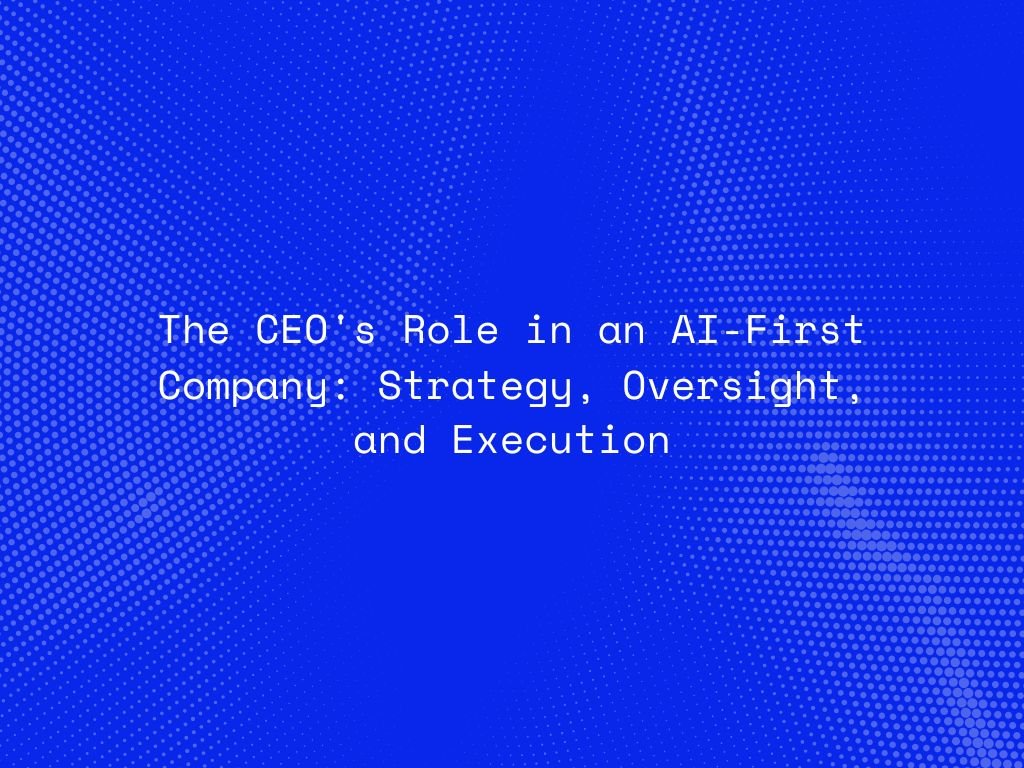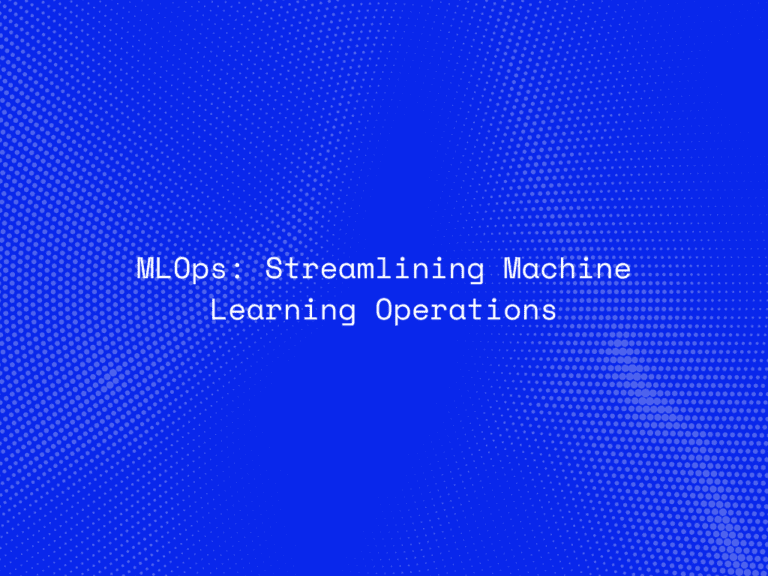The role of the CEO has evolved dramatically in the age of AI. In a traditional business, CEOs focus on growth strategy, operational alignment, and competitive positioning. In an AI-first company, however, they must go beyond that—reimagining how technology, data, and intelligence converge to create new business models.
Being AI-first isn’t just about adopting AI—it’s about putting AI at the center of value creation, decision-making, and innovation. The CEO plays a critical role in setting the tone, vision, and operational blueprint for this transformation.
What Does “AI-First” Really Mean?
An AI-first company doesn’t treat artificial intelligence as an add-on; it builds products, services, and internal processes with AI at the core. This means:
-
AI is foundational to the company’s competitive edge.
-
Data is treated as a strategic asset.
-
Business decisions are increasingly data-driven and predictive.
-
AI helps scale personalization, automation, and insight generation.
The CEO’s Role in an AI-First Enterprise
1. Vision and Strategy: Defining the AI-First Future
A CEO must set a clear AI vision aligned with business outcomes:
-
How can AI drive value for customers and stakeholders?
-
Where can AI disrupt our industry or create new markets?
-
How will AI reshape our core offerings?
This means shifting from traditional planning to agile, iterative thinking—where pilots, experiments, and AI models guide future investments.
“A CEO in an AI-first company isn’t just leading a business—they’re architecting a digital brain for it.”
2. Culture and Talent: Fostering AI-Driven Thinking
AI-first companies thrive when their people embrace experimentation, data literacy, and cross-functional collaboration. The CEO must:
-
Cultivate a data-driven and AI-literate culture across all departments.
-
Attract and retain top talent in AI/ML, data science, and MLOps.
-
Encourage cross-pollination between business, engineering, and design teams.
Leadership must also make AI understandable, not intimidating. CEOs should champion AI upskilling and democratization—not just automation.
3. Governance and Ethics: Leading with Trust
AI comes with risks—bias, hallucinations, privacy violations. The CEO is ultimately responsible for:
-
Setting the tone on ethical AI development and deployment.
-
Investing in responsible AI practices—transparency, explainability, fairness.
-
Appointing cross-functional oversight (e.g., AI Ethics Boards, Risk Committees).
Being proactive with regulation and self-governance will build trust with customers, regulators, and employees alike.
4. Data Infrastructure: Enabling Scalable Intelligence
No AI-first company succeeds without robust data infrastructure. The CEO must ensure:
-
Enterprise-wide data readiness—clean, accessible, and compliant.
-
Investment in cloud platforms, data lakes, and AI toolchains.
-
Strategic use of synthetic data, federated learning, and privacy-preserving methods.
While CTOs and CIOs implement this, the CEO ensures funding, prioritization, and business alignment.
5. Execution and Acceleration: Scaling What Works
Beyond pilots and proofs of concept, AI must be productionized and measured. The CEO must:
-
Push for AI operationalization (MLOps) at scale.
-
Insist on ROI visibility for AI investments.
-
Prioritize customer impact, not just technical achievement.
This means aligning AI initiatives with real KPIs: cost reduction, speed-to-market, revenue growth, and improved customer satisfaction.
AI-First CEO Checklist
- Set a bold, long-term AI vision
- Foster a culture of innovation and continuous learning
- Govern AI ethically and transparently
- Prioritize data as a strategic enabler
- Build the AI stack in partnership with tech leaders
- Scale responsibly and measure outcomes

Examples of AI-First CEOs in Action
-
Satya Nadella (Microsoft): Transformed Microsoft into an AI-driven platform company through strategic acquisitions (e.g., OpenAI partnership) and cloud-first initiatives.
-
Jensen Huang (NVIDIA): Reimagined GPU hardware as AI infrastructure, now foundational to enterprise AI and GenAI models.
-
Sundar Pichai (Google): Led Google into the AI-first era with BERT, Gemini, and AI-driven search experiences.
These CEOs didn’t just fund AI—they integrated it into their companies’ DNA.
Conclusion
In 2025 and beyond, the most successful companies won’t just be tech-savvy—they’ll be AI-native. The CEO’s role is central in driving this shift: from vision to execution, from ethics to acceleration.
In an AI-first world, leadership isn’t about managing disruption—it’s about mastering it.




